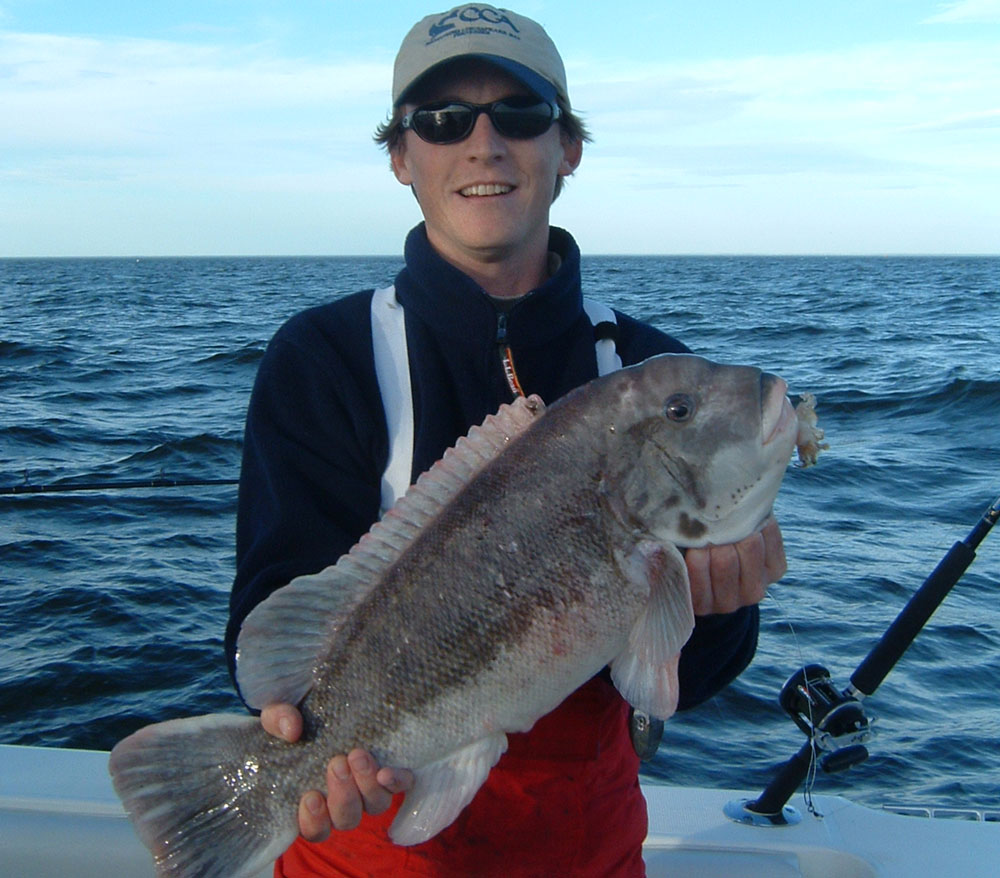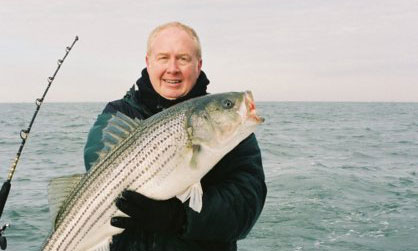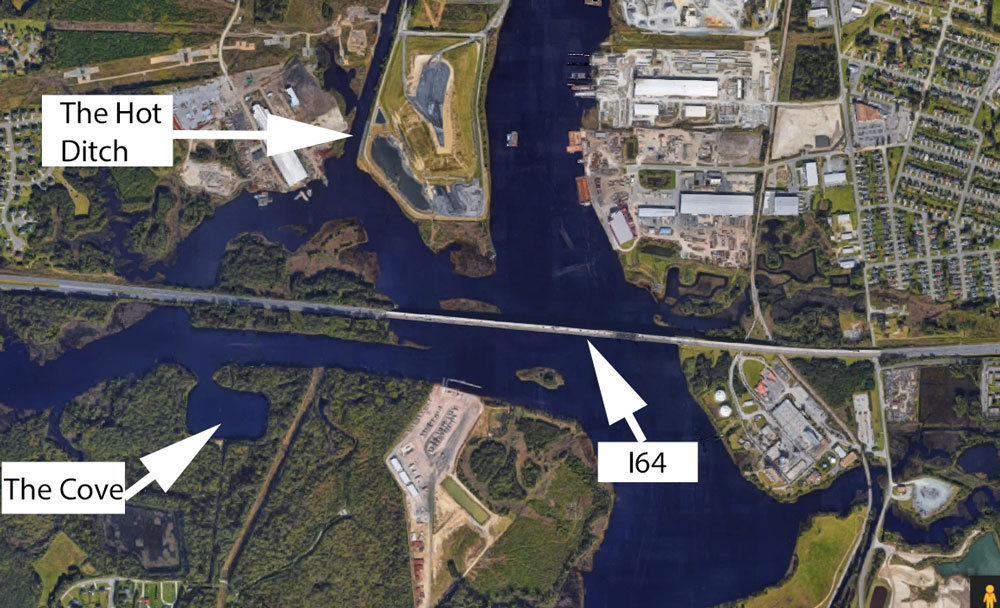With all the talk of winterizing your boat, falling temperatures, and the like, for some anglers in Virginia, December fishing opportunities may go unfulfilled. An angler may instead sit and watch fishing shows about some lucky guy working the flats in some endless summer paradise. It’s a good time for tying bucktails, making bottom rigs, and reorganizing tackle. But before those times arrive, there are those last bluebird days when the weather cooperates enough to get in another trip or two. Sure, the options are narrower than in the summer months. But, heck, it’s just good to get out and enjoy the water one more time. So what options are left? In our area, there are three important ones to know about.

Tautog Fishing
Tautog are year-round inhabitants in Virginia waters. Being a northern species, they can tolerate colder temps than many of our fair-weather finned friends and some seasons can often be caught through much of the winter. Thanks to a tagging program conducted over many years we know that some fish were recaptured in the exact same location a year or more after initially being tagged. Either these fish never leave, or they have remarkable navigation skills that bring them back to the same rockpile each year. In other words, if you caught them a year ago in a specific location, chances are good they will be in the same place this year.
During most winters, the fish stay active around the Chesapeake Bay Bridge Tunnel. However, when the water drops into the low 30s and 40s they stop feeding and hibernate through the winter. I am told that they lay motionless on their side on rocks. When they stop biting in the bay, it’s time to go deeper. Virginia has many inshore wrecks. From the Cape Henry Wreck right at the mouth of the Bay, to the Triangle Wrecks around 30 miles out, there is plenty of good tog bottom to be fished and the fish on the wrecks often stay active right through the winter.
The standard tautog rig is simple. One or two “Virginia style” hooks are fished on short dropper loops tied to a leader with a big loop at the bottom, to add a sinker. The bottom hook is just a few inches from the sinker. In recent years, tog jigs have also become popular up north. I intend to try them out this year. (A Google search for “tog jigs” will point you to them. I got mine at Backwater Baits.) The best baits for togs are whole fiddler crabs, green crabs, or chunks of larger crabs – like blue crab. Often, crabs are difficult to come by during the colder months. Some people will use frozen crabs as a substitute.
As simple as the rig is, catching them can be a bit trickier. Small togs are notorious bait thieves, making away with the meal before you even feel them. Larger togs will pull your rig down into the rocks where it becomes snagged. Some people use a lighter length of leader going to the sinker so that it will break off while the hooked fish stays on. Others, like my buddy Stan Gold, will wait the fish out, giving him a bit of slack and hope that he swims back out of his hiding place.
Stripers at the CBBT
Another viable option during most winters are striped bass. Before the end of the year, you may keep stripers caught in the Virginia portion of the Chesapeake Bay. Here’s a quick reminder of the regulations: In the bay, October 4th through December 31st, you are allowed two stripers per day with a minimum size of 20 inches and a maximum size of 28 inches, although one of those two fish may be greater than 28 inches. During the Virginia Coastal Season (outside of the Bay, in the ocean out to three miles), January 1st through March 31st, you are allowed one fish, minimum size of 28 inches. As you surely know the regs can change with the bat of an eye, so check for the latest info before you head out fishing.

During December we like to soak eels around the high-level bridge area of the Chesapeake Bay Bridge Tunnel. This is the point where northern fish migrating down the coast enter the Bay. The pilings make for a good stopping-off place for the fish to assault bait pouring out of the Bay on a falling tide. In the past, we always fished right on the pilings. But in recent years we discovered that anchoring a little way off the bridge can be just as effective.
This is not the time for light tackle. A big striper in the current can be hard to turn. Since you will be anchored up, chasing the fish is not an option. The choice between mono or braid depends on personal preference. However, I’d recommend that you stick with one or the other on all the reels you will be using. If you do get a double and your lines get crossed, the braid will slice through the mono like butter.
The terminal tackle is simple. A three-way swivel with a short leader to a sinker, and a three-foot section of 60-pound fluorocarbon line with a 7/0 to 9/0 circle hook will do the trick. You may opt to use a “fish-finder” (sinker slide) instead of the three- way swivel, but I don’t think it much matters to these fish.
After the New Year, fishing sometimes shifts to the beach from Cape Henry all the way beyond the Carolina line. There are several variables related to how much this fishery will develop each year. Some years it is incredible, others it is not. Basically, a milder winter which keeps the baitfish in the area is better than a cold winter. (By the way, the same principle applies to whale-watching, which can be great in the winter months.) Check our weekly reports at FishTalkMag.com to keep up on the latest; we’ll keep them updated every Friday by noon right through the winter.
On the ocean-side, diving gannets are always something to keep on eye out for. These birds are unmistakable. From a distance they look like a swarm of bees in the sky, dive-bombing the water. Gannets hit the water hard and swim quite deep, targeting the bunker being pushed up by the school of stripers. If the birds are absent you may have to rely on blind trolling, or chatter on the radio. Just remember, birds or no birds, you must stay within three miles of the beach. This is hard when the school is hanging just out of this range. But, they do enforce this law!
Most people start off around Cape Henry, at least early in the year. As the season progresses, the bite often moves south. There is a good amount of “hard bottom” off of Sandbridge which can be productive at times.
Any of the same rigs you use elsewhere for big stripers will work. I like Mojo rigs and big lipped lures, like the Stretch 25 and Stretch 30. A lot of people use spreader bars and dredges for stripers. If the fish are thick and not moving around much, you can also drift eels under floats, through the school.
Speckled Sea Trout and Puppy Drum
One other option available in the winter months is the area we call the “Hot Ditch”. This refers to a warm water discharge coming from the Dominion Power Plant near the Deep Creek area of Chesapeake. In extremely cold winters, fish will bunch up in the warm water of the “ditch” itself. In milder winters they may be found in a broader area nearby. The area called “The Cove” is productive some years. The Cove is a rectangular area of water with a narrow entrance just off Deep Creek, near where it enters the Elizabeth River.

The primary target species in the Hot Ditch area are specks and puppy drum. However, from time to time, many different species have been found spending the winter in this warmer water. A lot of the regulars use live mullet for bait when they can be found. Others troll very slowly with lipped swimming plugs. Of course, jigs with GULP tails are always an option as well. This is winter fishing, so whatever bait you use, slow it down. The fish are not as active or as aggressive as during warmer seasons.
This area holds a lot of larger specks, as was proved a couple of years ago when some poachers were caught setting nets across the entrance to the Cove. Their boat was loaded with five-pound specks mixed in with puppy drum of similar size. Unfortunately, they caught enough fish (before getting caught themselves) to ruin the speckled trout fishery for quite some time.
So, before putting the boat away this year, wait for one for one of those rare, nice days and go after some late season fish. You can DVR those fishing shows and save them for a snowy day.
- By Chuck Harrison
Sign up here to get the weekly FishTalk Chesapeake Bay and Mid-Atlantic fishing reports in your email inbox, every Friday by noon.